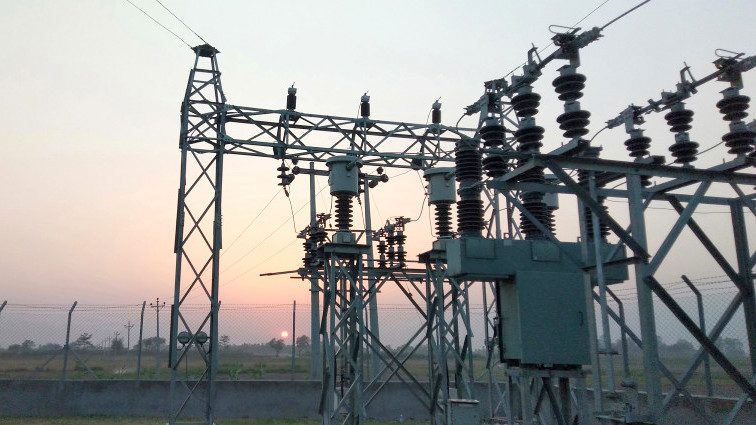Electricity and electronic devices are fundamental to the modern lifestyle, and this holds true for Nepal, as it does for many other countries around the globe. Despite the hurdles posed by the country's rugged topography and the ongoing developmental processes, the consumption and integration of electricity and electronic devices in daily life and various sectors have witnessed a considerable upswing in recent years.
This increase can be attributed to several factors including government initiatives aimed at improving the electricity infrastructure, as well as the influx and availability of a diverse range of electronic devices catering to different needs and preferences of the people. The growth of internet and mobile network connectivity has also played a crucial role in this upward trend. As more people gain access to reliable electricity and the internet, the usage of electronic devices such as smartphones, computers, and televisions is expected to rise even further, thereby transforming the way people live, work, and communicate in Nepal.
Electricity supply and infrastructure
Nepal's geographical diversity, with its vast rivers and high-altitude regions, offers unique challenges and opportunities in terms of electricity generation and infrastructure. Here’s a detailed look into the current state and challenges the country faces:
1. Hydropower Dominance
Nepal's electricity is predominantly harnessed from its numerous rivers and water sources. Hydropower contributes to the lion’s share of the country's power production. Given the topography and the abundance of fast-flowing rivers, hydropower becomes a natural choice for Nepal.
2. Diversifying the Power Mix
While hydropower remains the backbone, there is a noticeable contribution from other sources too. Solar energy has gained traction, especially in remote areas where laying traditional power lines might be challenging. Other renewable sources are also being explored to supplement the primary power production and ensure sustainability.
3. The Role of Nepal Electricity Authority (NEA)
The NEA stands as the central authority for anything related to electricity in Nepal. It shoulders the responsibilities ranging from power generation to transmission and distribution. Its initiatives and programs directly influence the electrification rate and power accessibility in the country.

4. Electrification Rate: A Dual Tale
As of 2021, the electrification rate in Nepal hovered around 85%. This figure, while promising, also reveals a disparity. Urban areas, with better infrastructure, have a higher rate of electricity access compared to rural regions. The remaining 15% primarily consists of people in remote areas who grapple with the challenges posed by rugged terrain and less developed infrastructure.
5. Challenges: Terrain and Infrastructure
One cannot stress enough the infrastructural challenges Nepal faces due to its unique geography. Rural areas, nestled amidst mountains and valleys, often find it hard to access consistent and reliable electricity. The cost and logistics of setting up infrastructure in such areas can be daunting, which often delays or even prevents electrification projects.
6. Affordability and Reliability
Even in areas with access to electricity, there are concerns related to the affordability and reliability of power. Fluctuating rates and occasional blackouts, particularly during times of maintenance or natural calamities, pose challenges for residents and businesses alike.
Nepal, with its blend of vast opportunities and unique challenges in the electricity sector, is continuously striving to achieve a brighter and more electrified future. By leveraging its natural resources and addressing infrastructural challenges, the nation hopes to illuminate every corner of its beautiful landscape.
Electronic devices
With the steady increase in access to electricity and the improvement of economic conditions, Nepal has witnessed a significant uptrend in the use of electronic devices. From mobile phones to household appliances, electronic devices have permeated various facets of daily life. Here's a closer look at some of the commonly used electronic devices in Nepal:
1. Mobile Phones: The Communication Revolution
The past decade has seen a substantial growth in mobile phone usage in Nepal, with smartphones becoming a ubiquitous sight. Several carriers, including Nepal Telecom (NT), Ncell, and Smart Telecom, offer cell phone services across the country, bringing people closer than ever before.

2. Computers and Laptops: Gateway to the Digital World
The use of computers and laptops has seen a surge, particularly in urban areas and among the younger generation. With internet penetration on the rise, more and more Nepalis are connecting to the World Wide Web, opening doors to countless opportunities and information.

3. Televisions: Entertainment at Its Best
Television has become a common feature in Nepali households, providing both cable and satellite options for viewers to enjoy a mix of local and international channels. From news to entertainment, televisions have become a primary source of information and leisure.
4. Household Appliances: Easing the Daily Chores
With greater access to electricity, there has been an increased demand for household appliances such as refrigerators, washing machines, and air conditioners. These appliances not only add comfort to daily life but also significantly ease the burden of household chores.
The integration of electronic devices in Nepal reflects the country's progress towards modernization and digitalization. As technology continues to evolve, it is crucial for the citizens and the government alike to adapt and harness the benefits offered by these electronic devices, ensuring a brighter and more connected future for Nepal.
E-commerce and Electronic Payments in Nepal
In the shadow of the Himalayas, Nepal is witnessing a digital renaissance. The combined influence of increased internet penetration and the ubiquity of electronic devices has paved the way for the rise of e-commerce and electronic payment systems in the country. This transformation marks a significant shift in the way Nepalis shop and conduct transactions. Here's an insight into this evolving digital landscape:
E-commerce: A New Shopping Frontier
The convenience of browsing products from the comfort of one's home and getting them delivered to the doorstep has changed the shopping paradigm in Nepal. Several online platforms have emerged to meet this demand:
-
Daraz: Originating as a venture of the Alibaba Group, Daraz has expanded its footprint in South Asia, including Nepal. It offers a wide array of products, from electronics to fashion, and has become one of the leading online shopping platforms in the country.
-
SastoDeal: True to its name (‘Sasto’ means cheap in Nepali), SastoDeal provides an assortment of products at competitive prices. This homegrown platform has garnered a loyal customer base and is known for promoting local brands.
-
Hamrobazaar: Functioning more as an online classified platform, Hamrobazaar facilitates peer-to-peer buying and selling. It's a popular choice for those looking to buy or sell second-hand goods, including electronics, vehicles, and real estate.
Electronic Payments: The Digital Wallet Revolution
With e-commerce comes the necessity for secure and convenient payment options. Traditional methods, such as cash on delivery, are still prevalent, but the trend is moving towards digital payments:
-
eSewa: Pioneering the digital payment landscape in Nepal, eSewa is a mobile wallet that allows users to make online payments, pay utility bills, recharge mobile balances, and more. Its widespread acceptance by merchants and seamless user experience has made it a household name in Nepal.
-
Khalti: Another prominent player in the mobile wallet scene, Khalti offers similar functionalities as eSewa, along with some unique features. It has been aggressively expanding its services, collaborating with banks and providing various cashback offers to attract users.
The surge in e-commerce and electronic payments reflects Nepal's digital aspirations and the changing dynamics of its economy. As these platforms and services continue to evolve, they promise to offer Nepalis more choices, convenience, and a modern shopping experience. The challenge ahead lies in expanding digital infrastructure, ensuring cybersecurity, and fostering digital literacy to ensure everyone can benefit from this digital transformation.

Challenges and Future Prospects
Nepal, with its picturesque landscapes and rich cultural heritage, is at a crossroads of transformation. The surge in the use of electricity and electronic devices paints a picture of progress, but this progress is punctuated by challenges that need addressing. Here's a closer look:
Challenges: The Roadblocks to Progress
-
Limited Access in Rural Areas: Despite efforts to electrify the nation, many remote regions of Nepal still lack a stable electricity supply. The rugged terrains and infrastructural bottlenecks make it challenging to extend the power grid to these areas.
-
Unreliable Power Supply: Even in areas with electricity access, power outages and load shedding can be frequent. This unpredictability hampers productivity and poses challenges for electronic device users.
-
High Costs: Some advanced electronic devices remain expensive for the average Nepali, making it challenging for everyone to reap the benefits of the digital age.
-
Dependence on Imports: A significant portion of Nepal's energy, especially fossil fuels, is imported. This not only affects the nation's trade deficit but also makes it vulnerable to international price fluctuations.
-
Sustainability Concerns: With increasing demand for energy, there's a pressing need to harness sustainable and eco-friendly energy sources to minimize environmental impacts.
Future Prospects: The Silver Lining
-
Investment in Renewable Energy: Nepal's topography is suitable for hydropower, and there are ample opportunities to tap into solar and wind energy. Continued investment in these sectors can make Nepal energy self-reliant and sustainable.
-
Technological Advancements: As technology evolves globally, the prices of electronic devices tend to decrease over time. This trend will make these devices more accessible to a broader segment of Nepal's population.
-
Infrastructure Development: With ongoing infrastructure projects, such as roads and bridges, reaching remote areas will become easier, potentially facilitating the expansion of the power grid.
-
Digital Initiatives: The government and private sector's push for digital Nepal initiatives will likely fuel the growth of electronic device usage, promoting e-governance, e-commerce, and digital education.
-
Local Manufacturing: Encouraging local manufacturing and assembly of electronic devices can reduce costs, generate employment, and reduce dependency on imports.
The journey of Nepal towards electrification and digitalization, while fraught with challenges, is filled with potential. With strategic investments, infrastructural development, and a focus on sustainability, the country can chart a course to a brighter, more connected, and empowered future.
Important Articles regarding traveling in Nepal
Introduction of Nepal
FOODS IN NEPAL
Before You Plan Nepal Trip
While You are in Nepal
Before Traveling Nepal
If you need any further information, please contact us, Email: [email protected], Phone: +977- 985 100 5129 (WhatsApp)




